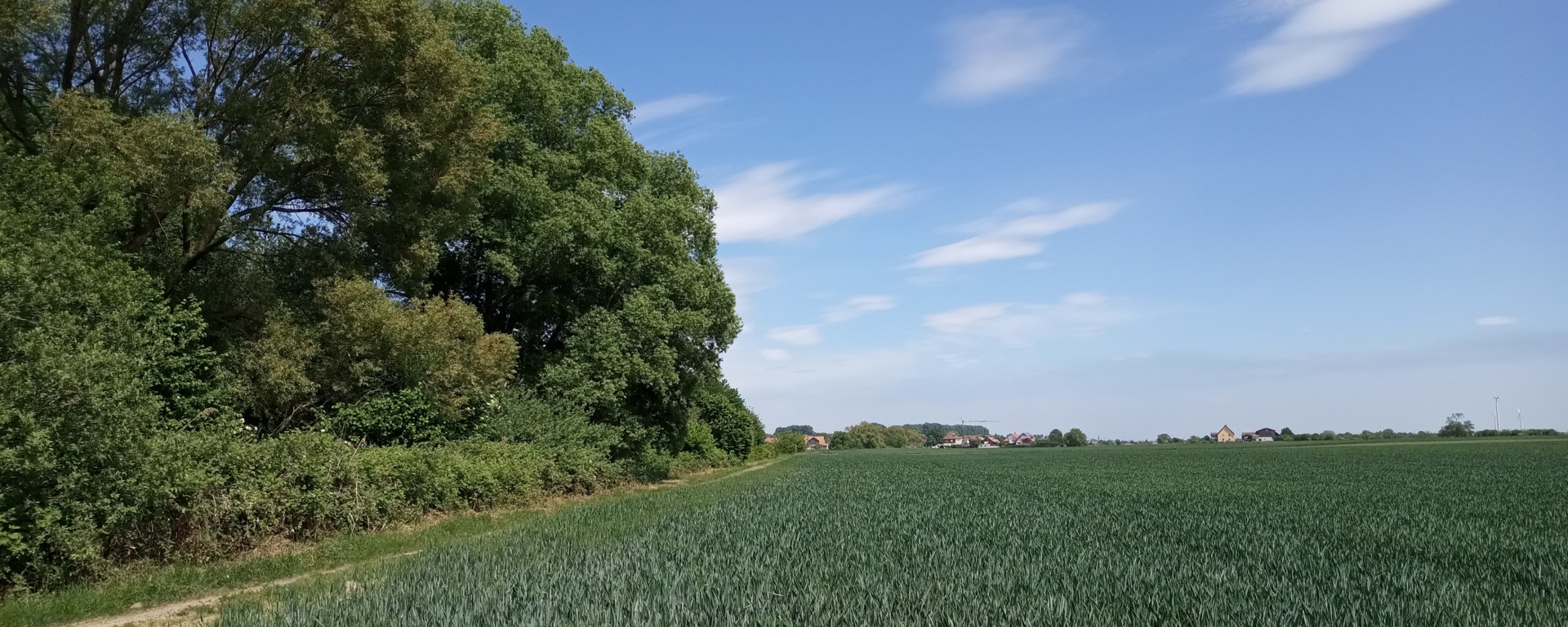This blog post is also available in Spanish.
Semi-natural habitats (SNH) are considered essential for pest-suppressive landscapes, but their influence on crop pests and natural enemies can be highly variable. In their latest research, González and colleagues assessed the responses of multiple insect pests and natural enemies in wheat fields to landscape context and flower availability.
Natural enemies of crop pests, including predators such as lacewings and hoverfly larvae and parasitoid wasps, provide the ecosystem service of biological pest control. Designing agricultural landscapes that promote this service is one of the main goals of the ecological intensification of agriculture.
However, this can be challenging due to the diversity of crop pests and natural enemies, and the different ways they respond to the landscape surrounding a cultivated field. For example, even though complex landscapes with large amounts of semi-natural habitats are expected to benefit natural enemies, this is not always the case.
One of the factors that could play an important role in biological control is the availability of specific resources such as flowers. Many predators and parasitoids need to eat nectar and pollen at some point of their life cycle and can live for longer and have more offspring when they eat floral resources. While many studies have shown that sowing flowering plants can indeed increase natural enemy abundance, the influence of the amount and diversity of flowers on a landscape scale is less clear.

In our study, we examined if the availability and diversity of flowers in the landscape, the amount of different habitats (semi-natural habitats and crops) or the shape and spatial distribution of these habitats had an influence on the abundance of winter wheat pests (aphids and cereal leaf beetles) and their natural enemies (predators and parasitoids).
For this, we selected 19 winter wheat fields in SW Germany that were surrounded by varying amounts of different habitats and flowers. We identified and measured the area covered by flowering plant species through exhaustive samplings at all the forest edges, hedgerows, grasslands, and cultivated fields. Using sweeping nets and visual observations, we counted the abundance of insects at three different wheat growing phases.

We found that hoverflies and lacewings, which depend on floral resources as adults, were benefitted from large areas and high diversity of flowers in the landscape, respectively. Most of the flowers in our landscapes were found in semi-natural woody habitats, showing that maintaining a network of these habitats can be a good way to promote beneficial insects.
However, lacewings were negatively associated with a specific index based on the flowers they prefer, so concentrating some resources could reduce lacewing movement and field colonisation. Other enemies that do not depend on flowers were instead affected by other landscapes features and increased with the size of the cultivated fields (ladybeetles and aphid parasitoids) or decreased with the amount of arable land (predatory bugs).Surprisingly, wheat pests were not negatively related to enemies, meaning that no clear signs of biological pest control were found. While the English grain aphid (Sitobion avenae) was more abundant in landscapes with more semi-natural habitats, the rose-grain aphid (Metopolophium dirhodum) showed the opposite pattern. The bird cherry-oat aphid (Rhopalosiphum padi) and cereal leaf beetles (Oulema spp.) were less abundant in landscapes with more edges between habitats.
Our results showed that wheat pests and their enemies respond in different ways to the habitats and resources located around a wheat field. While having more flowering plants in agricultural landscapes can increase the abundance of predators that consume them actively, this did not translate into higher pest control. However, designing landscapes that offer these floral resources along the edges of woody habitats can also disfavour the dominant cereal pests.
Read the full Open Access paper Ecological requirements drive the variable responses of wheat pests and natural enemies to the landscape context in Journal of Applied Ecology

One thought on “Ecological requirements drive the variable responses of wheat pests and natural enemies to the landscape context”